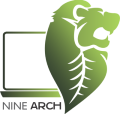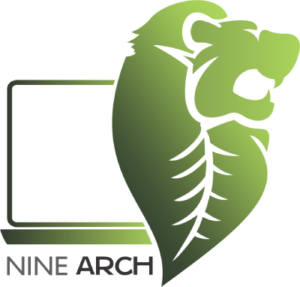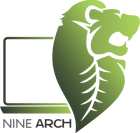Did you know that businesses lose an average of 20 percent of their annual productivity due to poor documentation practices? Clear and structured business process documentation saves time, reduces errors, and helps teams work more efficiently.
Whether your focus is compliance, improvement, or consistency, knowing how to document a process well can change how your organization operates and adapts. Discover how thoughtful steps can turn complex procedures into easy-to-follow guides that drive results.
Step 1: Define documentation objectives and process scope
When embarking on business process documentation, your first critical step is establishing clear objectives and defining precise process boundaries. According to research from Adobe, this involves meticulously detailing goals, expected results, timelines, and required approvals.
Start by identifying the specific purpose of your documentation. Are you creating a baseline model for process improvement? Ensuring regulatory compliance? Standardizing operational methods? Understanding your core motivation will guide the entire documentation strategy.
Break down your process scope by mapping out exact start and end points. Determine which organizational functions and roles will be involved. Clearly outline responsibilities for each participant to prevent confusion and create accountability. As research indicates, defining these boundaries prevents scope creep and ensures focused documentation.
Pro Tip: Think of process scope like drawing a map. Include enough detail to navigate successfully but avoid getting lost in unnecessary complexity.
Document specific metrics you want to track. Will you measure efficiency? Cost reduction? Quality improvements? Quantifiable objectives transform your documentation from a static record into a dynamic improvement tool.
Your next step will involve gathering comprehensive information about the current process workflow and preparing to map out each procedural element in detail.
Step 2: Gather essential process information and resources
In this crucial stage of process documentation, you will collect the comprehensive information needed to create an accurate and actionable process map. According to research from Adobe, determining the exact inputs required to achieve your established goals is essential for effective documentation.
Begin by identifying all systems, resources, tools, and people necessary to complete the process successfully. Walk through each step mentally and list out every component that plays a role. This includes software applications, hardware, human expertise, external dependencies, and communication channels that contribute to the workflow.
Research from Squibler suggests understanding the process scope involves determining key performance indicators and estimating the process duration. Interview team members directly involved in the process to capture nuanced insights that might not be immediately visible from surface level observations.
Pro Tip: Schedule brief individual conversations with team members who perform different roles within the process to gather the most comprehensive and authentic information.
Document both explicit and implicit resources. Look beyond technical tools and consider knowledge repositories, standard operating procedures, training materials, and institutional memory that support the process. Pay special attention to potential bottlenecks or interdependencies that could impact overall efficiency.

Your next step will involve creating a detailed workflow diagram that visually represents the process steps and interactions between different components and team members.
Step 3: Map out processes with clear visual workflows
Process mapping transforms complex operational details into clear graphical representations that everyone can understand. According to research from Lucidchart, visual workflow documentation helps track processes during execution and enables continuous improvement strategies.
Select an appropriate visual mapping technique that matches your process complexity. Some popular options include swimlane diagrams, flowcharts, and value stream maps. Each approach offers unique advantages for representing different types of workflows and organizational structures.
Here’s a summary of popular process mapping techniques:
| Technique | Best For | Key Features |
|---|---|---|
| Flowchart | Simple linear processes | Standard symbols Sequential steps Easy to read |
| Swimlane Diagram | Cross-functional workflows | Roles/departments lanes Shows interactions Clarifies responsibilities |
| Value Stream Map | Process improvement & efficiency | Highlights value & waste Shows time/data flows Used in Lean/Kaizen |
According to business process modeling research, your goal is to create uniform graphical representations that document complex realities and map business units with applicable regulations. Start by drawing sequential steps using standardized symbols. Rectangles typically represent process steps, diamonds indicate decision points, and arrows show directional flow.
Pro Tip: Use color coding to distinguish between different types of activities or responsible departments for enhanced visual clarity.
Ensure your workflow diagram includes key elements like process start and end points, individual task descriptions, responsible team members, estimated time for each step, and potential decision branches. Pay special attention to capturing both linear progression and potential alternative paths within the process.
Document any potential bottlenecks or areas requiring additional resources. Your visual representation should not just describe what happens but also highlight opportunities for potential optimization and efficiency improvements.
Your next step will involve validating the process map with key stakeholders to ensure accuracy and comprehensiveness of the documented workflow.
Step 4: Draft detailed documentation using best practices
Creating comprehensive process documentation requires a structured yet clear approach that transforms complex workflows into actionable guidance. According to research from Tettra, effective business process documents must include several critical components that provide a complete picture of the operational process.
Begin by crafting a clear process description that explains the overall purpose and context. Outline the objectives and precise scope of the process, identifying the specific process owner responsible for implementation and maintenance. This foundational section sets the stage for understanding why the process exists and who ultimately manages its execution.
Document detailed inputs and outputs for each stage of the workflow. Specify the resources required to initiate the process, the expected deliverables, and the transformation that occurs between input and output. This approach helps team members understand the purpose and value of each procedural step.
Pro Tip: Use consistent formatting and language throughout your documentation to ensure readability and comprehension across different organizational levels.
Break down the process into a granular step-by-step breakdown. For each task and activity, include specific instructions, potential variations, required skills, estimated time frames, and potential challenges. The goal is to create documentation so clear that a new team member could understand and execute the process with minimal additional guidance.
Incorporate visual elements like screenshots, diagrams, or decision trees to supplement written instructions. These visual aids can dramatically improve understanding and help communicate complex procedural nuances more effectively than text alone.
Your next step will involve reviewing and validating the documentation with key stakeholders to ensure accuracy and completeness of the process description.
Step 5: Validate accuracy with stakeholders and update as needed
Validating process documentation is a critical step that transforms theoretical workflow descriptions into practical operational guidelines. According to research from Adobe, comprehensive documentation must account for exceptions and indicate how potential anomalies should be managed throughout the process.
Schedule individual and group validation sessions with key stakeholders who have direct experience executing the documented process. Invite team members from different roles and levels to provide comprehensive feedback. This multi perspective approach ensures that your documentation captures nuanced operational realities from various viewpoints.
Research on project initiation documentation suggests creating a structured review framework that examines project goals, scope, organizational constraints, business case, and potential risks. Present your documented process and invite stakeholders to identify gaps, challenge assumptions, and share real world implementation insights.
Pro Tip: Create a feedback template with specific questions to guide stakeholder input and ensure structured systematic review.
Encourage stakeholders to share concrete examples of process variations they have encountered. Look for scenarios that might not fit neatly into your initial workflow diagram. These edge cases and exceptions are valuable opportunities to refine your documentation and make it more robust and adaptable.
Document all feedback systematically. Do not dismiss suggestions quickly. Even seemingly minor recommendations can reveal significant operational insights that dramatically improve process effectiveness. Revise your documentation iteratively based on stakeholder input to create a living document that reflects current operational realities.
Your final step will involve finalizing the process documentation and establishing a periodic review mechanism to keep the documentation current and relevant.
Streamline Your Business Processes with Expert Outsourcing Solutions
If you found the Business Process Documentation Guide for Efficient Operations helpful in understanding how to clearly define, map, and validate your workflows you may also be facing the challenge of turning that documentation into smooth, scalable operations. Whether it is ensuring consistent execution or handling complex workflows with diverse teams NineArchs LLC specializes in providing reliable remote workforce and custom technology solutions that can help you implement and optimize these documented processes. Our services like business process outsourcing and skills outsourcing are designed to ease operational bottlenecks and improve productivity while reducing costs.

Take control of your operational efficiency today by partnering with professionals who understand the value of well-documented processes. Explore how our business process outsourcing and custom software development offerings can support your goals for clarity accountability and continuous improvement. Visit NineArchs LLC now to learn how to turn your documented workflows into real business growth. Act now to transform your process documentation into actionable results with the right external talent and technology at your side.
Frequently Asked Questions
What are the primary objectives of business process documentation?
Establish clear objectives by identifying the specific reason for your documentation, such as baseline modeling for improvement or ensuring compliance. Start by defining your goals, which will guide your entire documentation strategy.
How do I determine the scope of my processes during documentation?
Break down the process scope by defining precise start and end points along with responsible roles. Outline each participant’s responsibilities to create accountability and prevent scope creep, ensuring a focused approach to documentation.
What information should I gather about the current process workflow?
Collect comprehensive information including systems, resources, tools, and people involved in the process. Conduct interviews with team members to capture insights that may not be visible through surface-level observations.
How can I create effective visual representations of my processes?
Use visual mapping techniques like flowcharts and swimlane diagrams to represent your workflows clearly. Start drawing with standardized symbols and color coding to enhance clarity, ensuring that your diagram includes key components such as task descriptions and responsible members.
What steps should I follow to validate my process documentation?
Schedule validation sessions with stakeholders who have direct experience with the processes. Encourage them to provide feedback on your documentation, focusing on identifying gaps and potential variations to create a more accurate and robust guide.
How often should I review and update my process documentation?
Establish a periodic review mechanism to keep your documentation current and relevant. Aim to conduct reviews at least once every six months to ensure that the documentation reflects any changes in the operational landscape.
Recommended
- Mastering IT Support Processes for Efficient Operations | NineArchs
- Step-by-Step Guide to Business Process Outsourcing Success | NineArchs
- Understanding IT Outsourcing Challenges Explained | NineArchs
- Business Process Outsourcing | NineArchs
- Understanding the Importance of Technical Documentation – My WordPress
- Digital Underwriting Workflow Guide for Seamless Automation – Digital Insurance Platform | IBSuite Insurance Software | Modern Insurance System










[…] such as recurring delays, redundant tasks, or points where work consistently stalls. The business process documentation guide can provide additional strategies for creating comprehensive workflow […]